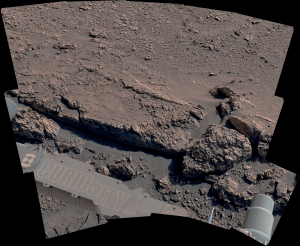Todd J. Barber, Cassini lead propulsion engineer
As Cassini approaches the beginning of its fourth year in Saturnian orbit, the spacecraft remains as busy as its Earth-bound controllers. The Titan-33 flyby is imminent as I write this on Friday, June 29, 2007. This flyby will be primarily devoted to radio science, painstakingly "teasing" out the secrets of Titan's interior by investigating the subtleties of Titan's gravity field. By measuring changes in the radio signal sent from Cassini to Earth at the speed of light, our radio science team can investigate subsurface structure on Titan, perhaps even the presence of a liquid water and ammonia ocean if it exists. Properties of the atmosphere may also be determined by its effect on the radio signal.
The spacecraft executed OTM-118 on June 26th in preparation for the T33 flyby, and this was the smallest propulsive maneuver the spacecraft has ever performed (in nearly ten years of flight), with a per-thruster firing time less than seven seconds. This burn also set up a June 27th flyby of Tethys, one of Saturn's intriguing icy moons. Voyager observations of Tethys likened the view to a "tennis ball chewed up by the family dog" given the presence of long canyon features. Cassini's suite of science instruments will expand on the views from Voyager and hopefully begin to answer some of the key science questions about this satellite. A recent Cassini press release suggested that Tethys and its sister moon Dione may be geologically active, yet another surprise from the endlessly alluring Saturnian system. Prime targets for this flyby include a close-up look at Tethys' giant crater Odysseus (450 kilometers, or 280 miles in diameter) and Ithaca Chasma, certainly worthy of "natural park" status on Tethys, given that it is four times longer than Earth's Grand Canyon.
As the flight team prepares to celebrate three years of Cassini being the first orbital mission to the ringed planet, we are reminded that there is a full year left in our prime mission and high hopes for an extended mission as well. We've come very far, but each encounter seems to raise more scientific questions, given the rich panoply of targets within the Saturnian system. It's an honor and privilege to conduct exploration on behalf of our nation at JPL, and for this opportunity we are thankful.






























